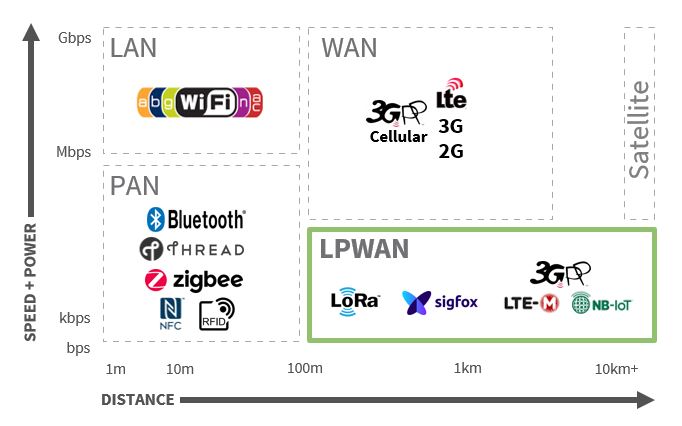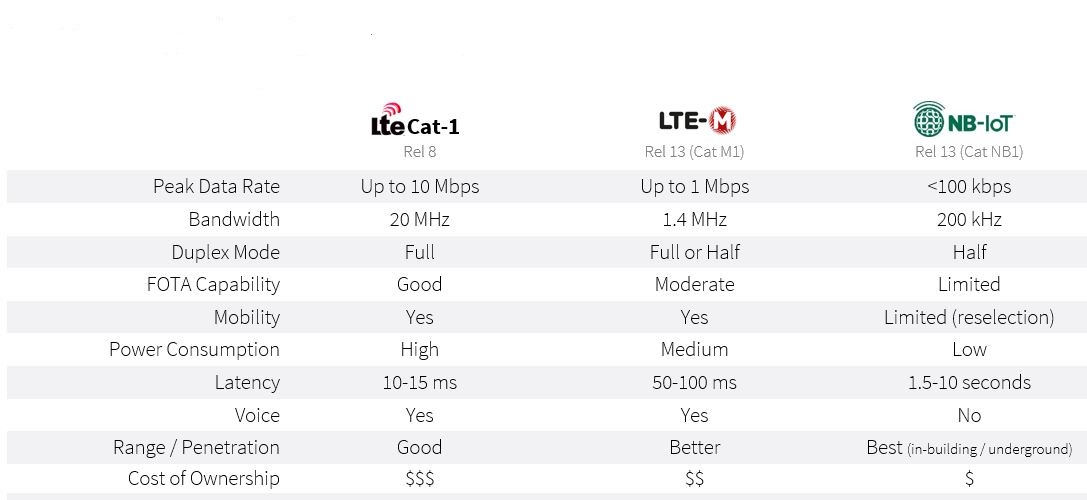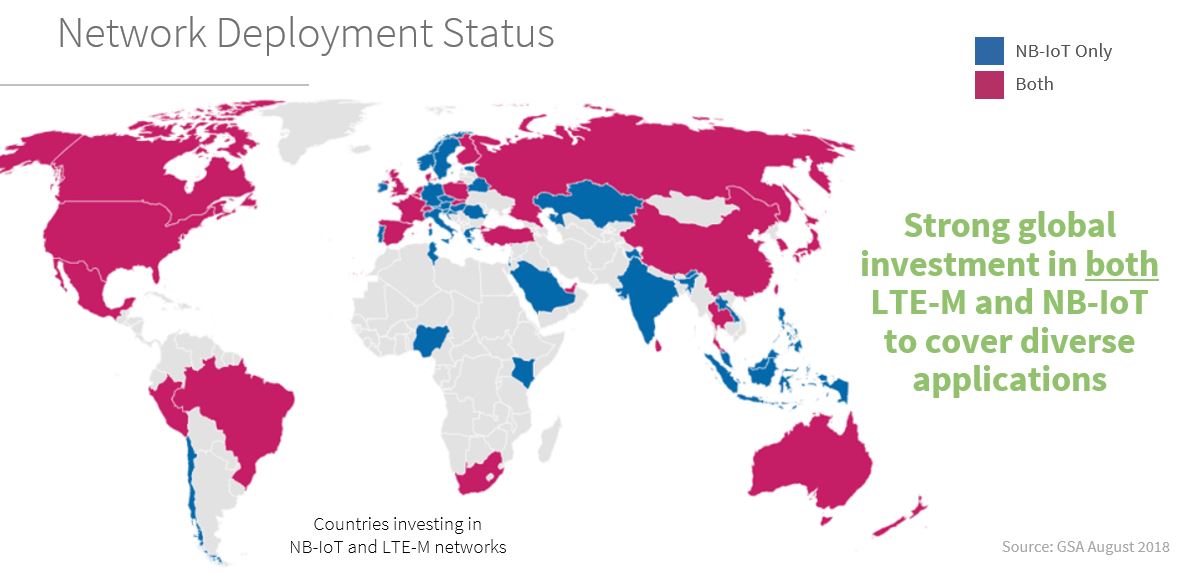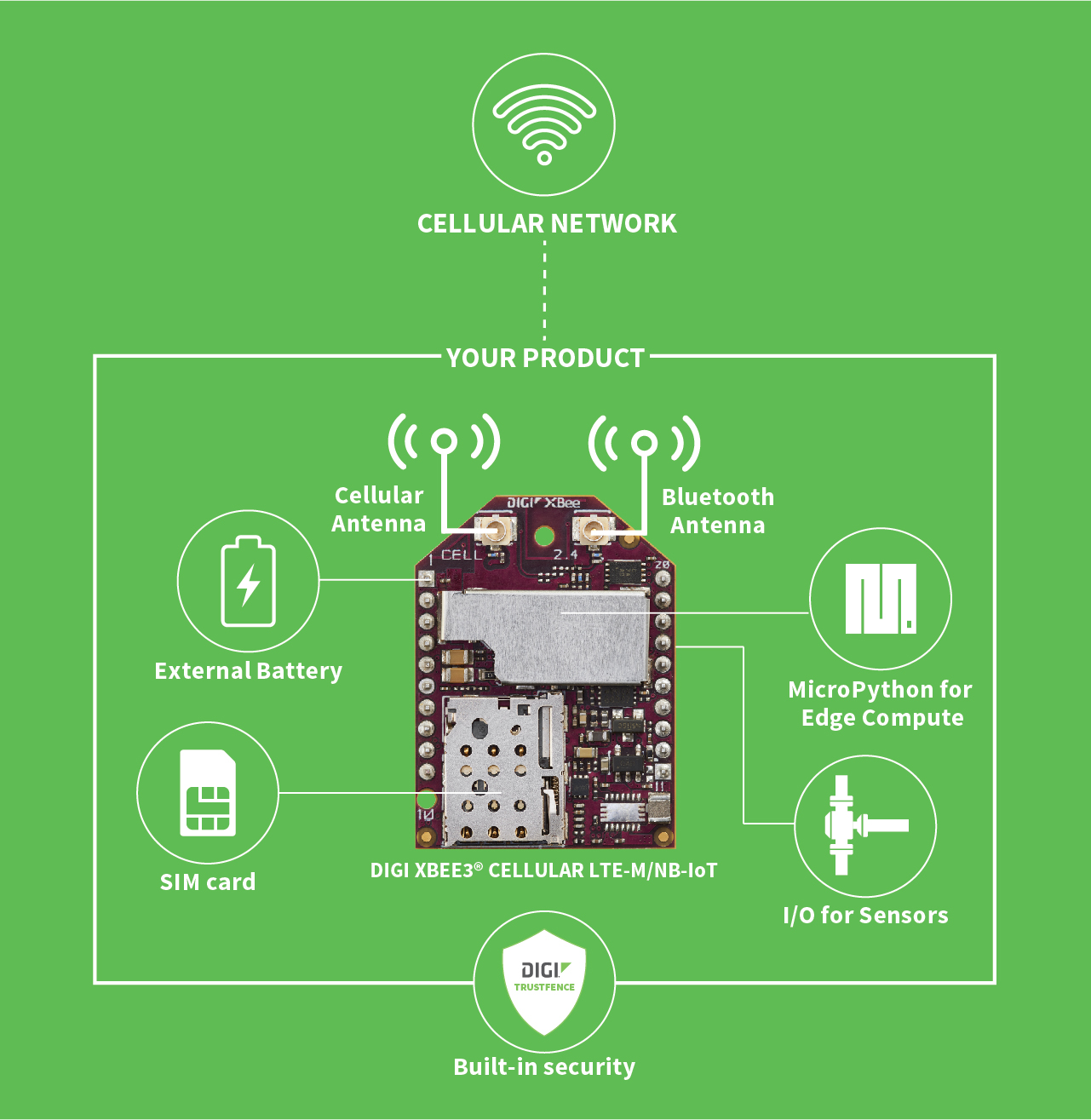Managing power in the IoT with cellular LPWAN technology
Power management in wireless devices out in the field is an issue of keen interest to those integrating and deploying connected devices, says Jayna Locke, Digi
Some of the most common questions around wireless power are: what is the most bandwidth- and power-efficient network technology for IoT, by application and what is the best way to manage the use of battery-powered devices out in the field to avoid the costs of regular maintenance?
Traditionally, wireless communications such as legacy 2G, 3G and even 4G modems require a lot of power to send data, which means it is not feasible to incorporate them into IoT products, because these technologies were optimised for mobile applications.
Mobile vs fixed devices
The considerations for mobile devices are completely different from installed devices. The key requirement for mobile is data speed to support high bandwidth video, voice, and streaming data, all of which require power. Distance is rarely a problem in mobile applications because a cellular module can maintain a connection by switching cell towers as it moves. Battery power is of little concern because mobile devices are accessible and can be rapidly recharged.
The requirements shift completely with applications that need to be placed in stable, remote locations. Many of these applications are intended to last five to 10 years or more, and are only cost-effective if they communicate reliably and cheaply across distances and have batteries that use minimal power, and thus rarely need to be replaced.
Cellular LPWAN technologies
The misfit between the available communication technologies and many of the applications relying on them led to the development of new scalable technologies for reduced power consumption, such as Cat 1, followed by LTE-M and NB-IoT.
All three technologies were developed by a collection of large telecommunications enterprises, including Qualcomm and Vodafone, in conjunction with the popular 3GPP standard and LPWAN technologies have seen a succession of rollouts in recent years.

This is timely. IoT is in a massive growth pattern for applications in every known field and the requirements for non-mobile wireless device installations will be exponential. A recent study by Machina Research predicts three billion LPWAN connections will be deployed by 2025.
Both LTE-M and NB-IoT can operate at much lower power, making it feasible to incorporate them into remote IoT devices. The devices incorporating these technologies are simplified, lower-cost radios, such as the Digi XBee3 LTE-M / NB-IoT module, that support low power, latency-tolerant applications. With the availability of these technologies, the industry is seeing deployment longevity, in some cases up to 10 years of battery life versus one year with older technologies.
Support for LPWAN
A mobile application requires near-instantaneous throughput but a small delay is acceptable in a remote application that must occasionally check in and send data. These relaxed requirements made it possible to optimise for power versus performance.
Two features that support low power usage are power saving mode (PSM) and extended discontinuous receive (EDRX), which reduce how frequently a device checks in with the cell tower for data updates. For example, a mobile, or cell, phone connects to the cellular network constantly, requiring power every time. Reducing that time to every 10 minutes requires much less power, resulting in lower data rates and increased scalability.
 Figure 2: LTE IoT technology comparisons
Figure 2: LTE IoT technology comparisons
PSM allows a modem to go into an extreme low-power mode when idle, and then return to active state without power-hungry start-up processes. EDRX extends the amount of time before the modem checks in with the tower to up to 40 minutes. In this period, the modem remains online but idle. The result is significant power savings.
Several concurrent solutions have emerged alongside LTE Cat-1, LTE-M and NB-IoT, primarily LoRa and Sigfox. The industry has seen a considerable amount of controversy over which LPWAN technology will emerge on top.
For its strategy, Digi considered multiple factors, including wide acceptance of the 3GPP standard. Both LTE-M and NB-IoT are 3GPP developments, with distinct features.
LTE-M (also known as Cat M1) is designed to send short messages at long intervals, making it a good choice for applications that require real-time monitoring and reporting, but at dispersed intervals. It works well for remote and off-grid deployments due to its low power requirements. NB-IoT operates outside of LTE, using lower throughput speed, and therefore supports applications that do not need to communicate in real- time. LTE-Cat-1 is still an important contender due to its stability and global network deployment.
Figure 2 is a comparison of some key features of each IoT technology, covering bandwidth, power consumption and cost-of-ownership.

Another key reason for selecting both LTE-M and NB-IoT for its cellular modems is the strong worldwide investment in both of these technologies (see Figure 3).
To support diverse applications, Digi has developed a module that supports both LTE-M and NB-IoT in one device. The Digi XBee3 LTE-M / NB-IoT cellular modem is certified with leading network operators to provide a fast and low-risk way to add cellular connectivity to a product.
The module includes integrated MicroPython and API/AT modes. No host microcontroller is required. There is also Digi TrustFence security framework integrated into the module, to secure device deployment with features such as secure boot.
Another feature is Digi Remote Manager, which provides secure monitoring and management of device deployment, including over-the-air (OTA) 2device configuration. The module also includes integrated Bluetooth Low Energy (BLE) for connectivity to mobile devices.
An example of an XBee3 Cellular LTE-M / NB-IoT application configuration is shown in Figure 4. Note that the microcontroller runs processes related to the security framework, as well MicroPython code and Bluetooth Low Energy. The module includes multiple I/Os that are MicroPython programmable, including I2C, PWM, digital I/O and analogue input, to meet the requirements of a range of applications.
An application’s intelligence can be programmed into the module, using the MicroPython program. For example, the frequency of a device’s wake cycle can be set and automatically updated if certain conditions have changed.
Managing power in edge devices
Getting the most from a device and power management strategy requires some thought. Similar to creating a household budget, the product designer must budget power for all communications, sensing, data collection, microcontroller power usage and other processes.
 Figure 4: Digi’s XBEE3 cellular LTE-M / NB-IoT module
Figure 4: Digi’s XBEE3 cellular LTE-M / NB-IoT module
It is also necessary to consider a number of factors that affect battery usage and longevity, such as temperature, humidity and duty cycle. It is also important to select the correct type of battery for the device. If a device draws more current than the battery is rated to support, it will perform inefficiently. Finally, while there are best practices, the guidelines vary by device and by battery. It is therefore important to develop on-staff expertise or work with an expert in the company of supply.


